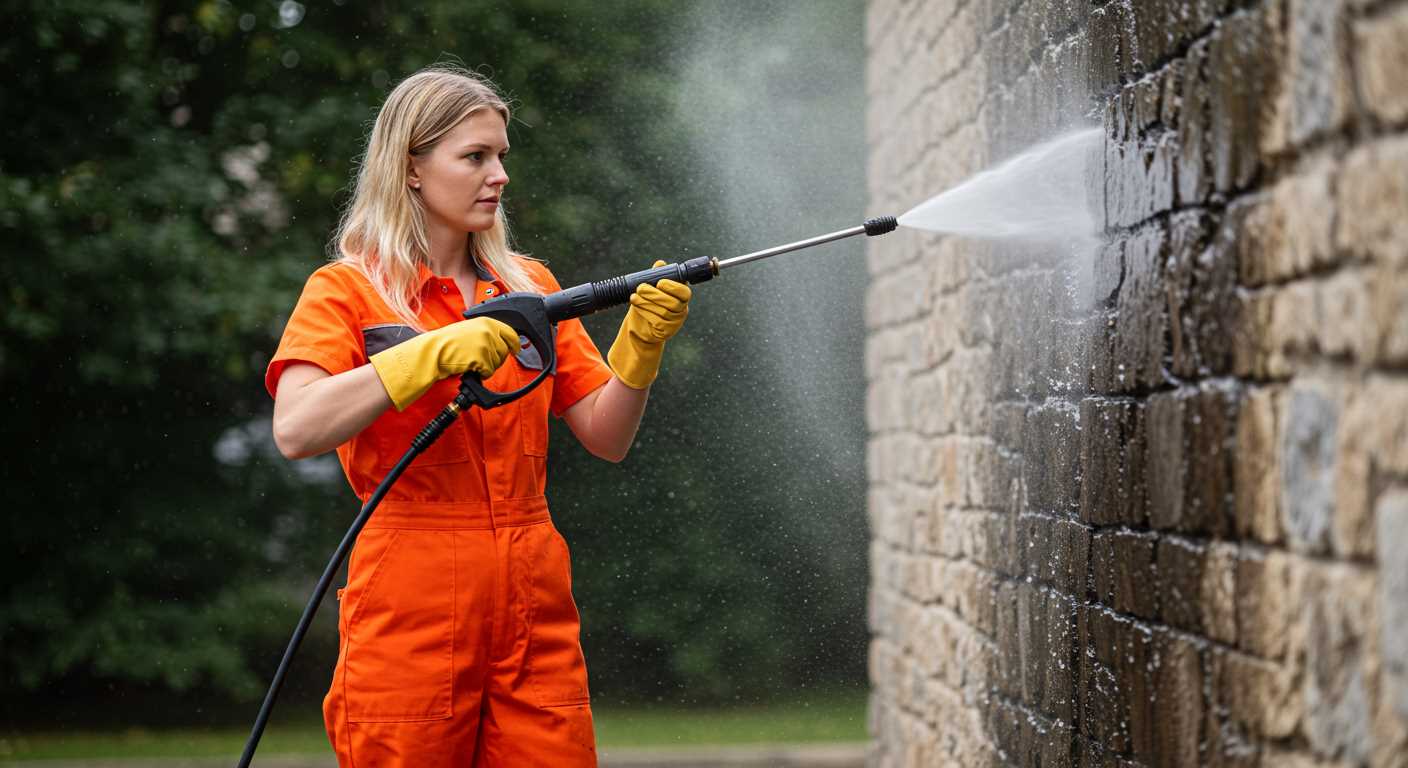



If your cleaning device consistently causes electrical disruptions, it’s likely time to assess its power requirements and the circuit it’s connected to. Start by examining the amperage rating of the machine and compare it to that of the outlet. If the device demands more power than the outlet can supply, consider using a dedicated circuit that can handle the load.
Another point to investigate is the quality of the extension cord employed. A lengthy or undersized cord can lead to voltage drop, making the device work harder than necessary, which might trip the circuit protection. Opt for a heavy-duty extension cord that meets the required specifications for your model.
Inspect the device itself for any signs of wear or damage, particularly in the power cord and the plug. Frayed wires or loose connections can create a short circuit, triggering safety measures. Routine maintenance checks can help prevent these issues from escalating.
If your equipment continues to malfunction, the electrical components such as the motor or pump may be faulty. Have a qualified technician evaluate internal issues, as fixing these problems promptly can save costs and prolong the lifespan of the equipment. Understanding these elements can enhance your experience with high-pressure cleaning tools and ensure more efficient operation.
Understanding the Electrical Requirements of Your Pressure Cleaner

First, ensure that your machine matches the voltage of your power supply. Most models operate at either 120V or 240V. Plugging a 120V unit into a 240V outlet can lead to circuit overloads and potential damage to the device.
Check the amperage ratings on your model. Units typically require between 10-15 amps. If your circuit cannot handle this level of current, it will trip the safety device. Consider using a dedicated circuit to avoid sharing with other appliances.
Extension Cord Considerations
If you’re using an extension cord, verify that it is rated for the same amperage and voltage as your cleaner. Opt for heavy-duty cords, ideally 12-gauge, to minimise voltage drop and overheating.
Maintenance of Electrical Components
Inspect cords and plugs for wear or damage. A frayed cord can create excessive resistance, leading to overheating and outages. Regularly check connections, ensuring they are clean and free of corrosion to maintain optimal performance.
Lastly, if you find persistent issues, consult a licensed electrician to assess your electrical system. They can identify potential faults or upgrades that might benefit your apparatus.
Identifying Common Causes of Circuit Breaker Activation

Inspect faulty wiring first. Over time, insulation can wear away, causing short circuits that prompt an automatic shutoff. Look for frayed edges or exposed wires before attempting any use.
Assessing the Extension Cord
Using an inadequate extension cord can overload the circuit, leading to frequent interruptions. Adhere to the following guidelines:
- Ensure the cord is rated for the amperage required by your equipment.
- Opt for heavy-duty versions to reduce resistance and heat buildup.
- Avoid daisy-chaining multiple cords; this can increase electrical load and create hazards.
Evaluating Component Overloads
Examine all attachments and accessories. High-pressure nozzles, cleaning solutions, or additional equipment might exceed the power limits. Consider these strategies:
- Check the recommended specifications for compatible attachments.
- Replace or repair worn items to prevent unnecessary strain on the machine.
Maintain cleanliness of all components. Blockages in hoses or nozzles can lead to motors working harder than necessary, sometimes causing breakers to trip unexpectedly.
Test the circuit breaker itself. A malfunctioning breaker can mistakenly detect overloads. If necessary, consult with a qualified electrician to assess the circuit integrity.
Checking for electrical overloads and circuit issues
Inspect the circuit rating to ensure compatibility with the equipment requirements. For instance, using a 15-amp circuit for a device that demands 20 amps can lead to frequent interruptions. Use a multimeter to verify the voltage at the outlet; it should match the recommended input specified in the manual.
Evaluate the condition of extension cords and power strips. Overloaded cords can overheat, which may cause a safety mechanism to activate. Always use thick, intact extension leads approved for heavy-duty applications, as thin or damaged ones increase resistance and risk overload.
Consider checking wall outlets for signs of wear or damage such as scorch marks or loose connections, as these can result in poor contact and overloads. If necessary, have a qualified electrician replace faulty outlets.
Assess the distribution panel to ensure it is not overloaded. Multiple heavy-load devices on the same circuit can exceed the capacity, causing issues. If you frequently use various appliances simultaneously, a dedicated circuit for your cleaning device may be a viable solution.
Finally, evaluate the overall wiring in your space. Old, frayed, or incorrectly installed wiring can lead to inconsistent power delivery, resulting in circuit breakers tripping. Hiring a professional electrician to inspect and upgrade wiring as needed can diminish potential risks associated with electric overload.
Inspecting the pressure washer for short circuits
First, ensure that all connections are securely fastened. Loose wires or filthy connectors can lead to short circuits. Start by unplugging the unit and visually examining the power cord. Look for any signs of fraying, cuts, or damage.
Next, check the internal wiring. Remove the cover to access the internal components, and inspect all wiring for insulation wear or breaks. Pay special attention to connections to the motor and pump.
Test for continuity in the cables using a multimeter. This tool will help identify any breaks in the circuit that may not be immediately visible. If the readings show irregularities, those areas may need repair or replacement.
Ensure that the GFCI (Ground Fault Circuit Interruptor) is functioning correctly, if present. This device can disconnect the power supply due to short circuits. Test it by pressing the reset button to see if it correctly resets. If it continually trips without a load, it might indicate the need for replacement.
Inspect the motor and other electrical components for any signs of overheating or burning. Signs of damage here can suggest an internal fault which may lead to tripping issues. If abnormalities are noted, consulting a technician for repairs is recommended.
Finally, confirm that environmental factors such as water exposure are minimised. Moisture can intrude into electrical components, leading to short circuits. Always store the equipment in a dry area and cover it when not in use.
Assessing the Power Cord and Plug Damage
Inspect the power cord and plug for any visible signs of wear or damage. Look for cuts, frays, or exposed wires which can indicate potential issues that lead to electrical failure.
Common Signs of Damage
Some indicators include:
- Cracks in the insulation
- Burn marks or melting
- Unusual odours, such as burning plastic
- Loose connections at the plug
Testing the Power Cord
Utilise a multimeter to check for continuity in the power cord. Disconnect the unit before testing.
Steps:
- Set the multimeter to the continuity setting.
- Connect one probe to one end of the cord and the other probe to the opposite end.
- If the meter beeps, the cord is intact; no sound indicates a break in the circuit.
| Type of Damage | Potential Issue | Solution |
|---|---|---|
| Frayed insulation | Electrical shorts | Replace cord |
| Burn marks | Overheating | Inspect plug; replace if necessary |
| Loose plug connection | Poor power supply | Tighten connections or replace plug |
If any issues are detected, it’s crucial to either replace the damaged components or consult with a qualified electrician. Ignoring these signs can lead to hazardous conditions or further equipment failure.
Evaluating the motor performance of your cleaning unit
Examine the amperage rating of your unit to ensure it operates within specified limits. An overly demanding motor can cause circuits to overload and tripping events to occur. Reference the user manual for the correct amperage and verify with a multimeter if necessary.
Listen for unusual noises while the device is running. Rattling, grinding, or squealing sounds may indicate bearing issues or imbalances within the motor. These problems can lead to inefficiencies and undue stress on the electrical components.
Check the temperature of the motor casing during operation. If it becomes excessively hot, this could signal improper functionality or mechanical drag. Ensure that there are no obstructions in the motor ventilation openings which could restrict airflow.
Assessing components for wear and tear

Inspect brushes and commutators for signs of wear. Inadequate contact can lead to poor performance and increased electrical consumption. Replace worn parts to restore optimal operation and reduce the risk of power interruptions.
Evaluate the startup characteristics of the motor. A unit that struggles to start may pull higher current initially, increasing the likelihood of sudden voltage spikes. If this happens consistently, consider consulting a professional to determine if the motor needs replacement or a thorough refurbishment.
Considering GFCI outlet limitations and compatibility

For optimal performance, it’s vital to consider the limitations of GFCI outlets when connecting your equipment. A standard GFCI outlet is designed to provide ground fault protection, but it may not handle the high current draw of cleaning machines effectively.
GFCI Outlet Characteristics
- Typically rated for 15 or 20 amps.
- May trip due to minor electrical fluctuations, especially in devices with motors.
- Compatibility issues arise when using heavy-duty units that exceed these ratings.
When in doubt, checking the amp rating of your equipment is essential to ensure compatibility with your outlet. Using a higher-rated GFCI may improve stability during operation.
Recommendations for Use
- Ensure your equipment’s amperage does not exceed the outlet’s limit. If your cleaning machine is rated above 15 amps, consider using a dedicated circuit.
- Test the GFCI outlet periodically. Some GFCI breakers lose their protective capabilities over time.
- Consider upgrading to GFCI outlets that are designed to handle higher loads while still offering protection.
For those experiencing frequent outlet tripping, switching to a different circuit or using an outlet that does not have GFCI protection might be a sensible approach, provided local regulations allow it. Always consult a qualified electrician for advice specific to your situation.
Taking preventive measures to avoid future issues
Regular maintenance is key. Clean the filter and check the nozzle for clogs after each use to enhance performance and prevent potential network issues. Inspect the unit’s components for wear and tear, replacing any damaged parts promptly.
Using appropriate outlets
Utilising a dedicated circuit for your cleaning equipment is vital. Ensure the circuit can handle the unit’s amperage without overload. If using a GFCI outlet, test it regularly to ensure functionality, as some may have limitations that affect performance.
Safeguarding your power source

Utilise an extension cord only if it meets the required specifications, especially in length and gauge. Avoid daisy-chaining multiple devices, as this can lead to overheating and overload. Keeping cords in good condition is critical to prevent electrical failures.









